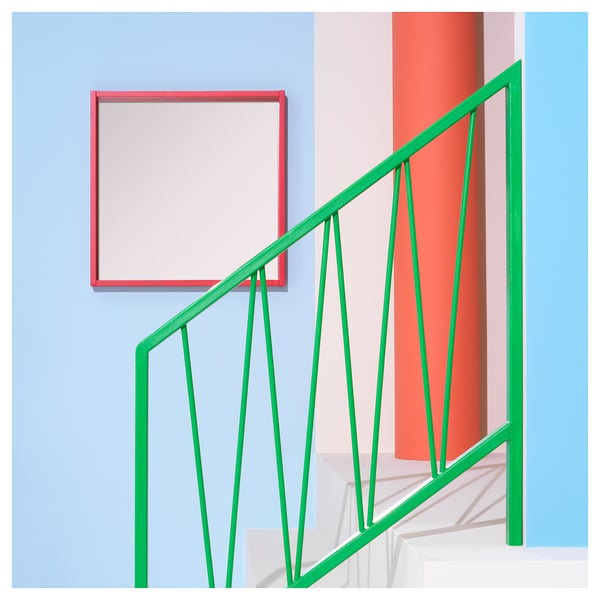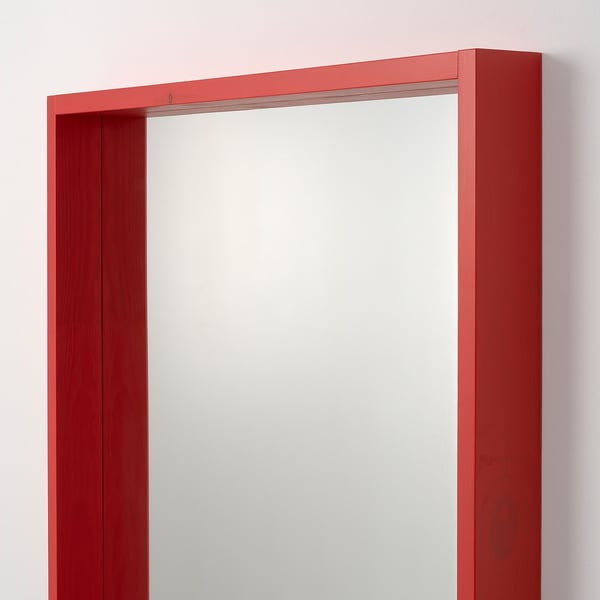TURBOKASTANJ mirror was called JARL when launched in our 1978 catalogue. Then, just as now, with a frame in solid pine – but in the Nytillverkad collection it’s also available in red with visible grain.
Delivery costs or service costs for Click & Collect and collection from a pick-up pointProduct description
When Gillis Lundgren's JARL mirror was launched in our 1978 catalogue, it had a solid pine frame. So does TURBOKASTANJ, but in the Nytillverkad collection it also comes in red with visible grain.
By the sturdy base of the mirror, the deep frame forms a little shelf where you can put small things.
Provided with safety film - reduces damage if glass is broken.
Part of the Nytillverkad collection where several IKEA classics have been given a new look.
Gillis Lundgren
Good to know
Different wall materials require different types of fixing devices. Use fixing devices suitable for the walls in your home, sold separately.
To hang securely in place on the wall, this mirror requires 2 screws.
IKEA of Sweden AB SE-343 81 Älmhult, IKEA.com
Materials and care
Material
- Frame:
- Solid pine, Clear lacquer
- Mirror/ Mirror:
- Glass, Plastic foil
- Suspension fitting:
- Galvanized steel
Care
Wipe clean with a cloth dampened in water or window-cleaner.
Wipe dry with a clean cloth.
Wipe clean with a damp cloth.
Wipe dry with a clean cloth.
Assembly and documents
Assembly instructions
TURBOKASTANJ Mirror505.664.49Measurements and packaging
- Depth: 7 cm
- Height: 75 cm
- Width: 75 cm
Packaging
TURBOKASTANJ
Article Number505.664.49- Width: 75 cm
- Height: 7 cm
- Length: 75 cm
- Weight: 6.30 kg
- Package(s): 1
Accessories for TURBOKASTANJ
Material
What is mirror glass?
Mirror glass comprises mostly of ordinary glass with a reflective coating in some kind of metal. In the past it was common for the coating to contain lead or mercury – but over time, both of these metals have been shown to be harmful to people and the environment. That’s why, as of several years ago, IKEA has a total ban on using lead or mercury in our mirrors and instead it is non-toxic silver or aluminium that reflects your mirror image.
Designer thoughts
Designer thoughts
When Gillis Lundgren was hired in 1953, he became the fourth(!) employee ever at IKEA. At first, he illustrated catalogue covers and photographed products while Ingvar Kamprad wrote texts, but soon he also started designing furniture. His JARL mirror was presented in our 1978 catalogue. Then, just as now, with a solid pine frame. In the Nytillverkad collection, it is also available in red with visible grain and is named TURBOKASTANJ.




